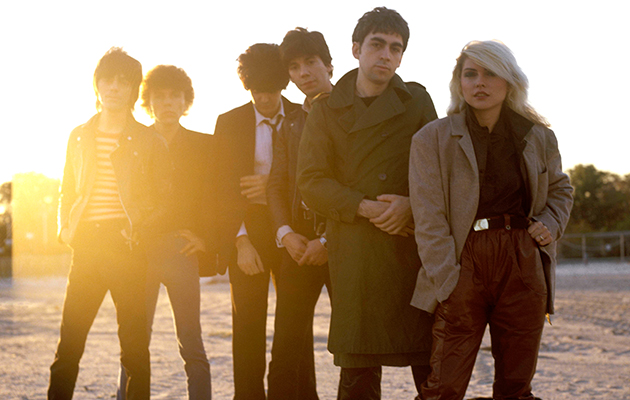
The speed at which Blondie travel in the late Seventies is perhaps best judged by the distance that opens up between the band and the downtown scene. With Parallel Lines, the band began a long relationship with producer Mike Chapman. “They became classic rock, almost,” notes Jim Jarmusch. “They were all over the radio. It was kind of cool to see them blow up like that. At the same time, downtown there was the so called No Wave scene – DNA and Teenage Jesus and Theoretical Girls – that was the next wave. Blondie were in a different world by then. But then, a lot of things changed. AIDS and drug use – first heroin and then crack – were devastating. The sky got darker, so to speak.”
In purely geographical terms, Harry and Stein’s relocation from the Bowery to an penthouse at 200 West 58th Street –close to Central Park and Carnegie Hall – is symbolic of the way Blondie were no longer contained within the handful of blocks that constituted the downtown scene. With “Heart Of Glass”, Blondie found a new audience in the uptown crowd at Studio 54. The culture was moving on; but Blondie had moved with it. Instead of Little Italy wiseguys and CBGB’s punks, by 1980, Harry was sitting for Warhol. “I bumped into Andy on Broadway and 13th and said hello,” says Harry. “He knew who we were from the little gossip things or things in the local papers. It seemed very natural. He was always very interested in what was going on around him. He seemed unafraid of upsetting people. I think he really liked colourful people.”
Yet while band’s success continued into the early Eighties, they remained attuned to shifts in the underground scenes. “Rapture” reflected the city’s hip hop and graffiti cultures; the video, meanwhile, assembled luminaries including Fab Five Freddy, Lee Quinones and Jean-Michel Basquiat. “The stuff me and Basquiat did together was social commentary,” says Al Diaz, Basquiat’s former partner in SAMO© graffiti tag. “We were making wise-cracks about our environment, people in the city, hypocrisies, stuff like that. It was more like the Romans making comments about Julius Caesar as opposed to just spray-painting your name.”
Harry and Stein fervently promoted Basquiat; Harry tells of buying a painting, on a piece of cardboard, from the artist in 1981 for $200. “No one knew what the fuck was going to happen with Jean,” says Stein. “Nobody recognised him early on for being a breakthrough.”
One could make the same claim for Blondie, of course. Today, Harry and Stein still live in New York – they’ve both relocated downtown. The band have recently reconvened to begin work on a new album, due later this year, with producer John Congleton – a regular collaborator with another downtown resident, St Vincent. “New York has always been a city of change, and a city about change,” reflects Harry. “I’ve been here long enough to see a lot of shifts.”



